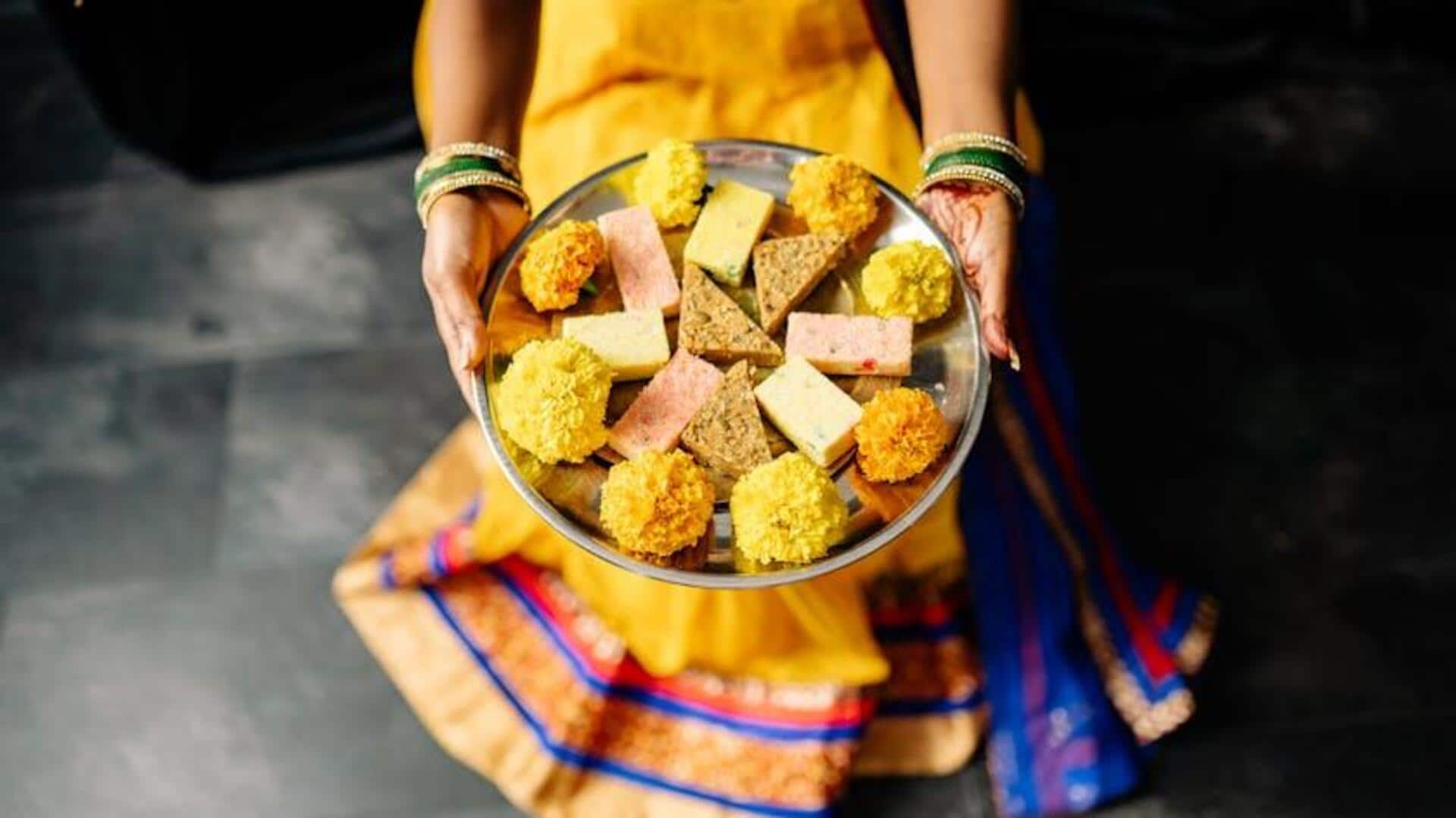
Tracing mithai: From ancient traditions to modern delights
What's the story
Mithai, a term synonymous with Indian sweets, has a rich history that dates back centuries. These confections have evolved from simple ingredients to intricate creations that are enjoyed worldwide today. The journey of mithai reflects cultural exchanges, regional influences, and the creativity of artisans who have perfected their craft over generations. This article explores the fascinating evolution of mithai from its ancient roots to its modern-day variations.
#1
Ancient origins and ingredients
The history of mithai dates back to ancient India when sweets were prepared with simple ingredients such as jaggery and honey. These primitive delicacies were typically used in festivities. With time, the practice of cultivating sugarcane became popular and sugar started being used liberally in sweet-making. Ingredients like milk, ghee, and nuts became a norm in preparing various forms of mithai.
#2
Regional variations across India
India's diverse geography has led to the emergence of numerous regional variations of mithai. Each region has its unique flavors and techniques depending on local ingredients and traditions. For example, Bengal is famous for its syrupy rasgulla while Rajasthan presents the rich ghevar during festivals. These regional specialties showcase the adaptability and creativity in Indian sweet-making traditions.
#3
Influence of trade routes on mithai
Trade routes also played a big part in the evolution of mithai. New ingredients such as saffron, cardamom, and almonds from Persia and Arabia made their way into the Indian kitchen. They enriched traditional recipes with exotic flavors, which are still loved today. The cultural exchange also brought innovative techniques into sweet-making practices across regions.
#4
Modern innovations in mithai making
In recent years, we've seen modern innovations creep into traditional mithais. From chocolate barfi to mango-flavored laddoos, chefs are experimenting with fusion flavors, catering not just locally, but globally, too! Further, technology has come a long way, enabling mass production without compromising on quality, making sure they're available all year round. Now, it's easier than ever to indulge anytime, anywhere!